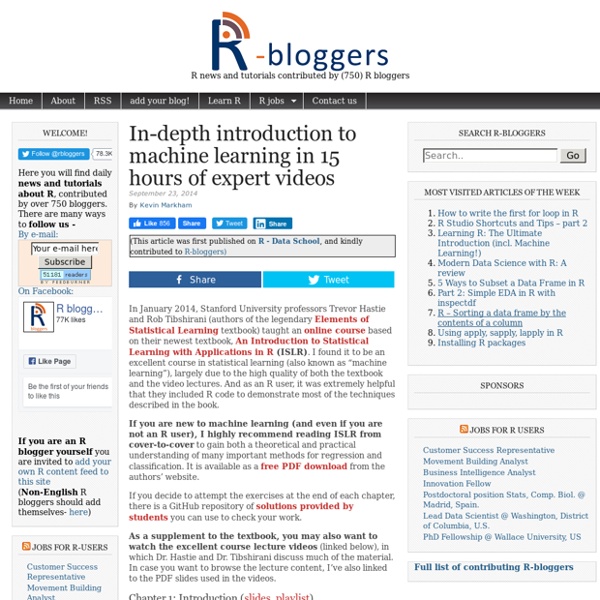



Introducing R The purpose of these notes, an update of my 1992 handout Introducing S-Plus, is to provide a quick introduction to R, particularly as a tool for fitting linear and generalized linear models. Additional examples may be found in the R Logs section of my GLM course. R is a powerful environment for statistical computing which runs on several platforms. These notes are written specially for users running the Windows version, but most of the material applies to the Mac and Linux versions as well. 1.1 The R Language and Environment R was first written as a research project by Ross Ihaka and Robert Gentleman, and is now under active development by a group of statisticians called 'the R core team', with a home page at www.r-project.org. R was designed to be 'not unlike' the S language developed by John Chambers and others at Bell Labs. R is available free of charge and is distributed under the terms of the Free Software Foundation's GNU General Public License. 1.2 Bibliographic Remarks
How To Get Started With Machine Learning Algorithms in R - Machine Learning Mastery R is the most popular platform for applied machine learning. When you want to get serious with applied machine learning you will find your way into R. It is very powerful because so many machine learning algorithms are provided. In this post you will discover how you can over come this difficulty with machine learning algorithms in R, with pre-prepared recipes that follow a consistent structure. Lots of Algorithms, Little Consistency The R ecosystem is enormous. A problem that I experienced when starting out with R was that the usage to each algorithm differs from package to package. All this means that if you want to try a few different algorithms from different packages, you must spend time figuring out how to fit and make predictions with each method in turn. I summarize these difficulties as follows: Inconsistent: Algorithm implementations vary in the way a model is fit to data and the way a model is used to generate predictions. Build an Algorithm Recipe Book Algorithm Recipes in R
ProjectTemplate Big Data Applications and Analytics MOOC - Course Geoffrey gives some amazing statistics for total storage; uploaded video and uploaded photos; the social media interactions every minute; aspects of the business big data tidal wave; monitors of aircraft engines; the science research data sizes from particle physics to astronomy and earth science; genes sequenced; and finally the long tail of science. The next slide emphasizes applications using algorithms on clouds. This leads to the rallying cry ''Use Clouds running Data Analytics Collaboratively processing Big Data to solve problems in X-Informatics educated in data science'' with a catalog of the many values of X ''Astronomy, Biology, Biomedicine, Business, Chemistry, Climate, Crisis, Earth Science, Energy, Environment, Finance, Health, Intelligence, Lifestyle, Marketing, Medicine, Pathology, Policy, Radar, Security, Sensor, Social, Sustainability, Wealth and Wellness''
Quick-R: Home Page